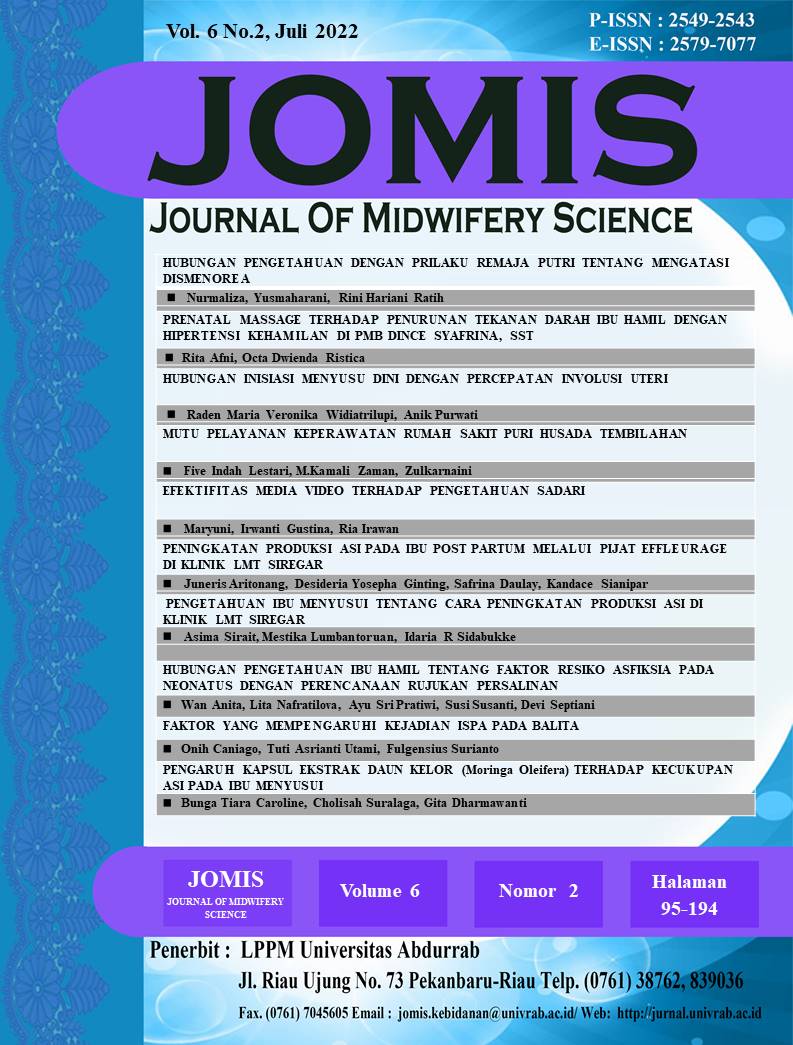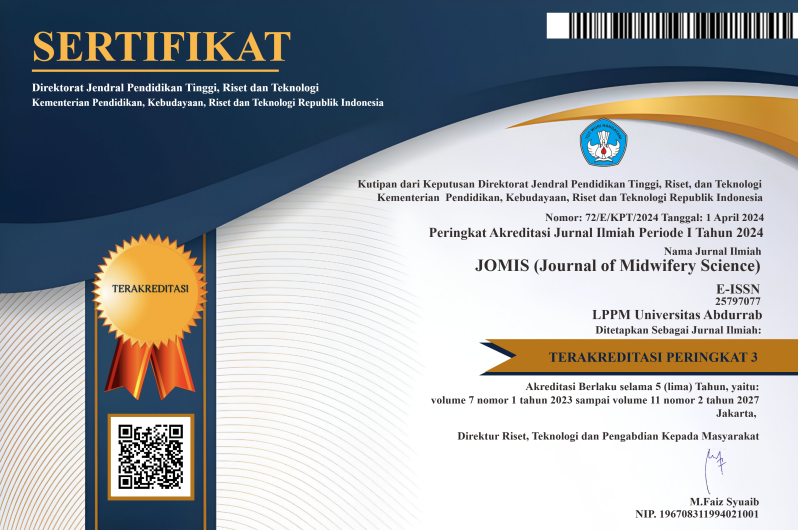PENINGKATAN PRODUKSI ASI PADA IBU POST PARTUM MELALUI PIJAT EFFLEURAGE DI KLINIK LMT SIREGAR
DOI:
https://doi.org/10.36341/jomis.v6i2.2500Keywords:
Efflurage massage, production, breastfeedingAbstract
Exclusive breastfeeding has a significant effect on the quality of the baby's health. The fact is that only 1 in 2 babies under 6 months are getting exclusive breastfeeding. One way that can affect the increase in breast milk production is by means of massage techniques. This study aims to determine the effectiveness of effleurage massage on breast milk production in post partum mothers This type of research is a quantitative study in the form of a quasi-experimental design with a two-group pretest-posttest design. The population of this study was all post partum mothers who gave birth at LMT Siregar Clinic as many as 14 people and the research sample using accidental sampling technique was 14 people who were divided into 2 groups, intervention and control. Collecting data using observation sheets which were analyzed using the Wilcoxon test. The results showed a p-value of 0.038 in the intervention group and a p-value of 0.083 in the control group. The conclusion is the difference in the production of post partum mother's milk before and after the effleurage massage in the intervention group but there is no difference in the production of breast milk in the control group. For this reason is expected to provide health education on how to increase milk production with effleurage massage techniques and the need to provide support to families to carry out complementary therapy with effleurage massage techniques to increase prolactin hormone levels.
Downloads
Downloads
Published
Issue
Section
License
1. Copyright of all journal manuscripts is held by the JOMIS : Journal of midwifery scinece
2. Formal legal provisions to access digital articles of electronic journal are subject to the provision of the Creative Commons Attribution-ShareAlike license (CC BY-NC-SA), which means that JOMIS : Journal of midwifery scinece is rightful to keep, transfer media/format, manage in the form of databases, maintain, and publish articles.
3. Published manuscripts both printed and electronic are open access for educational, research, and library purposes. Additionally, the editorial board is not responsible for any violations of copyright law.
licensed under a Creative Commons Attribution-ShareAlike 4.0 International License.










